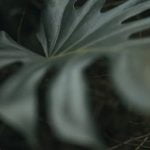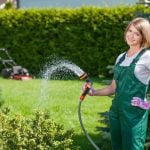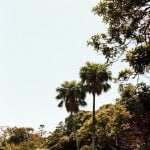Are you looking to transform your small garden into a thriving wildlife habitat? If so, then exploring wildlife pond ideas for small gardens is the perfect place to start. Wildlife ponds not only add beauty and tranquility to your outdoor space but also provide essential habitats for various creatures. From colorful dragonflies to beautiful water lilies, there are endless possibilities when it comes to designing a wildlife pond in a limited area.
When considering creating a pond in your small garden, it’s important to carefully plan and prepare the space. Assessing factors such as available space, sunlight exposure, and proximity to a water source will help determine the best location for your wildlife pond. By incorporating these key elements into your planning process, you can ensure a successful and sustainable ecosystem that will attract a variety of wildlife species.
In the following sections, we will delve into creative design options for small garden ponds, plant selection tips for a thriving ecosystem, strategies for attracting wildlife to your pond, maintenance tips to keep it healthy year-round, and even a step-by-step guide for DIY pond construction. Get ready to be inspired by real-life examples of successful wildlife ponds in small gardens as we explore how you can create your own little oasis with these ideas.
Planning and Preparation
When considering wildlife pond ideas for small gardens, it is essential to start with proper planning and preparation. One of the first steps is to assess the space available in your garden. Even in a small yard, you can still create a thriving wildlife pond by utilizing creative design techniques. Look for areas that receive a good amount of sunlight throughout the day, as this will help support the growth of aquatic plants and provide essential warmth for wildlife.
In addition to space and sunlight, make sure to consider a reliable water source for your wildlife pond. While some gardeners opt for preformed ponds that require filling with a hose, others may choose to set up a rainwater harvesting system to collect water naturally. Whichever option you select, ensure that there is easy access to water for regular maintenance and topping up the pond when needed.
Before digging or constructing your wildlife pond, take the time to carefully plan out its location within your small garden. Consider how it will fit into the overall layout of your outdoor space and how it can serve as a focal point or unique feature. By assessing space, sunlight, and water source during the planning phase, you can set a solid foundation for creating a beautiful and functional wildlife pond in your small garden.
Design Options
When considering wildlife pond ideas for small gardens, it’s essential to get creative with the design to maximize space and functionality. Here are some innovative ideas for incorporating a wildlife pond into your small garden:
1. Container Ponds: If space is limited in your garden, consider creating a container pond using a large pot or tub. This option allows you to control the size and shape of the pond while still providing a habitat for wildlife. Choose a variety of aquatic plants such as water lilies and water lettuce to add beauty to your container pond.
2. Vertical Ponds: Vertical ponds are perfect for small gardens with limited ground space. You can create a stunning waterfall effect by stacking containers of varying sizes on top of each other, allowing water to cascade down from one level to the next. Add floating plants like duckweed and water hyacinth for an added touch of natural beauty.
3. Pondless Water Features: If you’re concerned about safety or maintenance issues, consider incorporating a pondless water feature into your garden design. This type of wildlife pond utilizes underground reservoirs and circulating pumps to create the illusion of a traditional pond without the need for standing water. You can still attract wildlife by including bird feeders and nesting spots around the feature.
By thinking outside the box and considering these design options, you can create a beautiful and functional wildlife pond in even the smallest of gardens. Whether you opt for a container pond, vertical design, or pondless feature, there are endless possibilities for incorporating a habitat that attracts local wildlife while enhancing the overall aesthetic appeal of your outdoor space.
Plant Selection
When choosing native aquatic plants for your wildlife pond, consider factors such as sunlight requirements, water depth, and growth habits. Floating plants like water lilies can help provide shade and shelter for fish and other aquatic creatures. Submerged plants like hornwort or anacharis can oxygenate the water and offer hiding places for small organisms. Marginal plants like marsh marigold or pickerelweed can add beauty to the edges of the pond while providing nesting sites for birds.
Incorporating a variety of native aquatic plants in your wildlife pond will not only enhance its visual appeal but also promote a diverse ecosystem. Avoid introducing non-native invasive species that can outcompete native plants and disrupt the balance of the ecosystem.
Research local plant species that are well-suited to your specific climate and growing conditions to ensure the success of your wildlife pond project. With careful planning and selection, you can create a biodiverse oasis that will attract a wide range of wildlife to your small garden.
Wildlife Attraction
Creating Habitats
One of the key strategies for attracting wildlife to a small garden pond is to create diverse habitats that cater to different species. Incorporating features like shallow areas, floating plants, and submerged logs can provide shelter and breeding grounds for a variety of creatures. For example, frogs are drawn to shallow edges where they can easily access the water and lay their eggs, while birds may appreciate overhanging branches for perching and nesting.
Offering Food Sources
To entice wildlife to visit your pond regularly, it’s essential to provide adequate food sources. Planting native vegetation around the pond can attract insects like dragonflies and damselflies, which in turn become prey for birds and frogs.
Additionally, adding aquatic plants like water lilies can support a healthy food chain by attracting small fish or tadpoles that larger animals feed on. Consider incorporating a small rock or log near the water’s edge as a basking spot for turtles or newts.
Providing Water Features
Incorporating different water features into your wildlife pond can help attract a wider range of species. Installing a simple fountain or waterfall not only adds visual interest but also creates movement and sound that can attract birds looking for drinking or bathing spots.
Additionally, providing access points such as sloped edges or rocks can make it easier for animals like bees or butterflies to safely drink from the pond without drowning. By considering these factors when designing your wildlife pond, you can maximize its appeal to local fauna and create a thriving ecosystem in your small garden.
Maintenance Tips
Maintaining a wildlife pond is essential to keep it clean and healthy year-round. One of the key maintenance tips is to regularly remove any debris such as fallen leaves, twigs, and algae buildup. This helps prevent nutrient imbalance in the water and ensures a healthy ecosystem for the aquatic plants and wildlife. Using a pond skimmer or net can make this task easier and more efficient.
In addition to physical cleaning, monitoring water quality is crucial for the overall well-being of the pond. Testing the water regularly for pH levels, ammonia, nitrites, and nitrates can help identify any issues early on. Making adjustments as needed, such as adding beneficial bacteria or water treatments, can help maintain a balanced ecosystem in the pond.
Another important aspect of maintaining a wildlife pond is proper plant care. Pruning aquatic plants as needed, removing invasive species, and fertilizing appropriately can contribute to the health of the pond. It’s also important to encourage biodiversity by including a variety of plant species that offer different habitats for wildlife. By following these maintenance tips consistently, you can enjoy a thriving wildlife pond in your small garden for years to come.
| Maintenance Tip | Importance |
|---|---|
| Regularly remove debris | Prevents nutrient imbalance |
| Monitor water quality | Identifies issues early on |
| Proper plant care | Contributes to pond health |
DIY Pond Construction
Creating a wildlife pond in a small garden can bring nature closer to home and provide a habitat for various species of plants and animals. With careful planning and preparation, even the smallest of outdoor spaces can be transformed into a thriving ecosystem. Here is a step-by-step guide to building your own wildlife pond:
- Choose the location: Select a spot in your garden that receives plenty of sunlight but is also shaded at certain times of the day to prevent algae growth. Ensure that the area is level and free from overhanging trees or roots that could puncture the pond liner.
- Excavate the area: Dig out the shape of your pond, making sure to create varying depths to accommodate different aquatic plants and wildlife. Create shelves around the edges for marginal plants to grow, and include deeper sections for fish or frogs.
- Install the pond liner: Once the hole is dug to your desired shape and depth, line it with a durable pond liner to prevent leaks. Make sure to secure the liner properly and trim any excess material around the edges.
Now that you have laid down the foundation for your wildlife pond, it’s time to add some finishing touches like rocks, gravel, or even a mini waterfall feature. Consider planting native aquatic plants around the edges and introducing beneficial bacteria to maintain water quality. With these DIY pond construction tips, you can soon enjoy watching birds drink from its waters, frogs sunbathe on its banks, and dragonflies gracefully swoop over this miniature oasis in your small garden.
Case Studies
The Urban Oasis Pond
One inspiring example of a successful wildlife pond in a small garden is the Urban Oasis Pond. Located in the heart of a bustling city, this small garden oasis is home to a variety of wildlife despite its urban setting.
By carefully designing and maintaining the pond, the owner has been able to attract birds, butterflies, and even small mammals to the space. The key to its success lies in the thoughtful selection of native plants and regular maintenance to keep the ecosystem thriving.
The Cottage Garden Haven
In a quaint cottage garden, a beautiful wildlife pond serves as a haven for local wildlife. Surrounded by blooming flowers and lush greenery, this pond provides a peaceful retreat for birds and insects alike.
By incorporating various levels within the pond, such as shallow areas for larger animals like frogs and deeper sections for aquatic plants, the owner has created a balanced ecosystem that attracts a wide range of species. This successful wildlife pond demonstrates how even small gardens can become thriving habitats with careful planning and design.
The Modern Minimalist Pond
For those with contemporary tastes, the Modern Minimalist Pond offers inspiration on how to incorporate a wildlife pond into a small garden without sacrificing style. Featuring sleek lines and simple design elements, this pond seamlessly blends into its surroundings while providing essential habitat for local fauna. By selecting non-invasive aquatic plants and implementing efficient filtration systems, the owner has achieved a low-maintenance wildlife pond that enhances the overall aesthetic of their modern garden space.
These real-life examples showcase the endless possibilities when it comes to creating a wildlife pond in small gardens. Whether you prefer a naturalistic look or a more streamlined design, there are countless ways to tailor your pond to suit your space and personal style while providing vital habitat for local wildlife.
By drawing inspiration from these case studies, you can embark on your own journey towards creating a thriving ecosystem in your backyard with these wildlife pond ideas for small gardens.
Conclusion
In conclusion, creating a wildlife pond in a small garden can truly transform the space into a thriving oasis for local fauna and flora. By carefully planning and preparing the area, selecting the right plants, and implementing wildlife attraction strategies, homeowners can enjoy the beauty and benefits of a vibrant ecosystem right outside their doorstep.
The DIY construction guide provided offers a practical way for enthusiasts to bring their vision to life and contribute to biodiversity conservation efforts in their own backyard.
As we have explored the various aspects of wildlife pond ideas for small gardens, it is evident that these features not only enhance the aesthetic appeal of a garden but also play a crucial role in supporting local wildlife populations. Whether it’s providing a water source for birds or shelter for frogs, a well-designed pond can attract a diverse range of species and contribute to the overall health of the ecosystem.
By following the maintenance tips outlined in this article, individuals can ensure that their pond remains clean and healthy throughout the year.
In closing, I encourage readers to consider implementing some of these wildlife pond ideas for small gardens in their own outdoor spaces. By taking inspiration from the design options and plant selections provided, homeowners can create a beautiful habitat that supports biodiversity and provides endless enjoyment for both themselves and visiting wildlife. With dedication and creativity, anyone can turn their small garden into a flourishing wildlife oasis that is sure to be enjoyed for years to come.
Frequently Asked Questions
What Is the Smallest Size Wildlife Pond?
The smallest size for a wildlife pond can be as small as 4 square feet or even smaller. While larger ponds can support more wildlife, even a small pond can attract various creatures like birds, insects, and amphibians.
Where Is the Best Location for a Small Wildlife Pond?
The best location for a small wildlife pond is generally in a sunny spot that receives sunlight for at least half of the day. It is important to choose an area away from overhanging trees to prevent falling leaves and debris from clogging the pond.
What Is the Best Position for a Garden Wildlife Pond?
The best position for a garden wildlife pond is one where it can attract the most biodiversity. This could mean placing it near plants to provide shade and shelter for animals, or in an open area to allow easy access for creatures like birds and amphibians.
A balance of sunlight and shade is crucial for maintaining the health of the pond ecosystem.

Welcome to my gardening blog! I am passionate about plants and enjoy sharing my knowledge and experiences with others. In this blog, I will write about everything related to gardening, from tips on how to get started to updates on my own garden projects.





